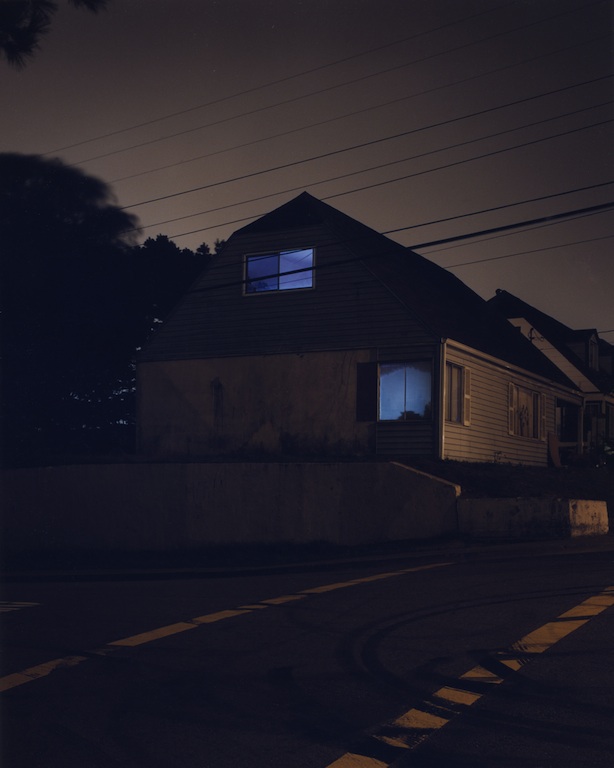
#2133 by Todd Hido, published in 2001
As a teenager, I would sometimes go on late night walks in my suburban neighborhood with a friend, for the pleasure of looking at the silent houses. Because the streets were empty and it was dark and quiet, it was natural to focus on the lighted windows and wonder about the unseen people inside: who they were and what they were doing.
Todd Hido’s first book, House Hunting, published in 2001, is a nocturnal reverie, filled with houses on the edge of slumber, where the light leaking into the gloom from one or two windows is the only sign that anything is going on, and this is enough to imbue the pictures with a delicious sense of tension. In Hido’s deceptively simple scenes, every shadowy detail is imprinted with the suggestion of significance, even though, as he confides in his book Todd Hido on Landscapes, Interiors, and the Nude, some of these details only became apparent to him when he exposed the pictures.
Photographs such as #2133, where so much is hidden, are often taken as invitations to embroider our own stories. Hido mentions the two windows of this corner house in a Californian suburb, each illuminated by the blue light of a television. He found it sad that the people sitting in the dark weren’t watching something together, as though the windows alone amounted to proof of estrangement. But what we project on to a picture like this says more about our personal expectations than it says about the occupants, whose identity and circumstances must remain a perpetual mystery. For all we know teenagers might be watching TV upstairs while their parents enjoy a video, or maybe a perfectly contented couple agreed to go with their favorite programs that evening.
Despite the temptation to speculate, Hido points to the pleasure in not knowing, and that’s how I prefer to look at this picture. As in his other images, he has adjusted the color for emotional effect while staying within the bounds of atmospheric credibility. “I’m not married to reality,” he writes. “I don’t feel I have to faithfully describe a place.” Later in his career, he began to think in terms of pictorial beauty, for so long a dubious notion within art practice, but his images were gorgeous from the start, and the allure of #2133 is similar to that of a painting. No matter how hard we strain to find the answer to what’s happening here—and how should we factor in the “doughnut” skid-marks in the street?—the scene will yield no solution. Its meaning, or perhaps better to say its purpose, lies in the power to seduce us into reflection and hyper-attune our senses.
See all Exposure columns
